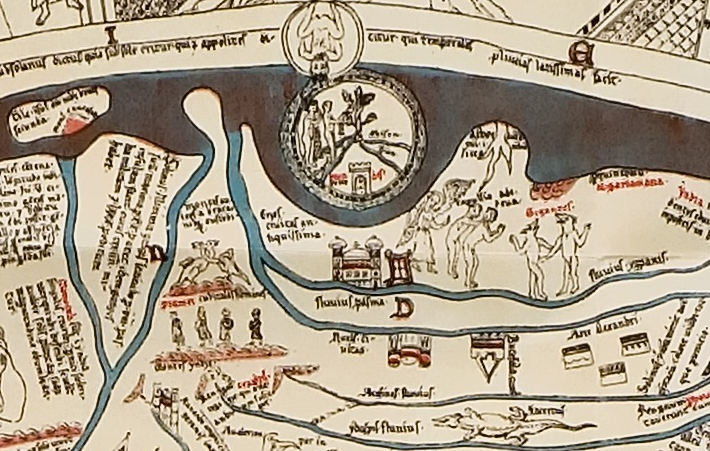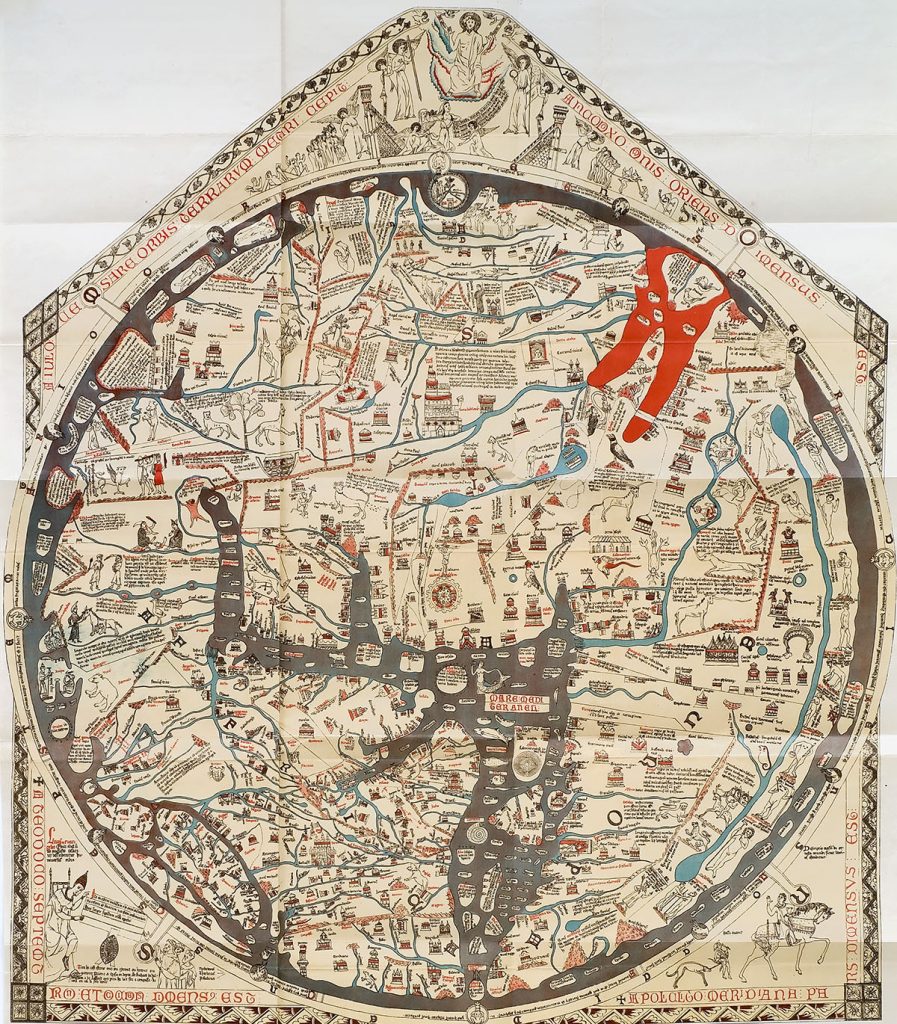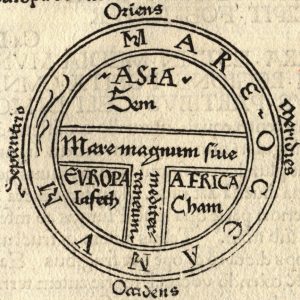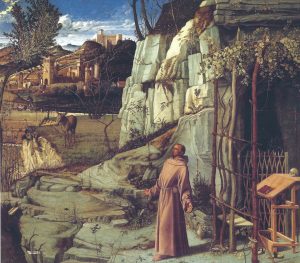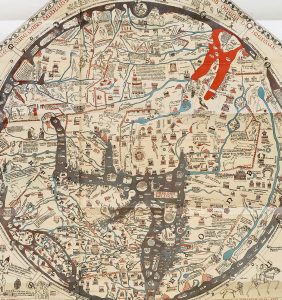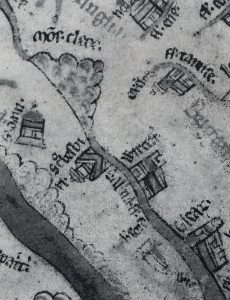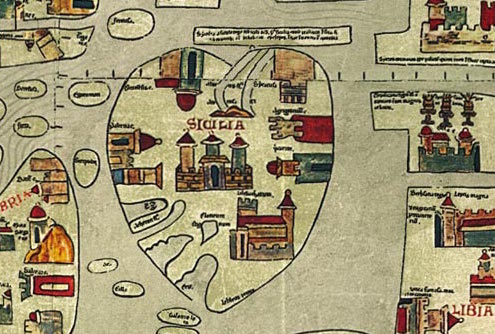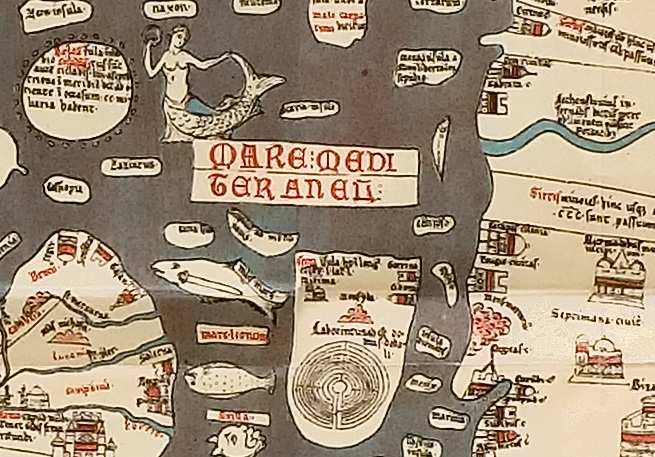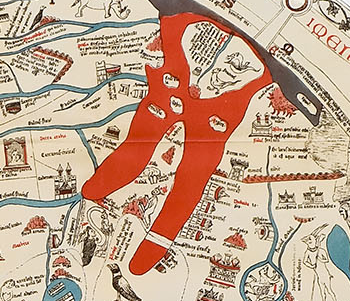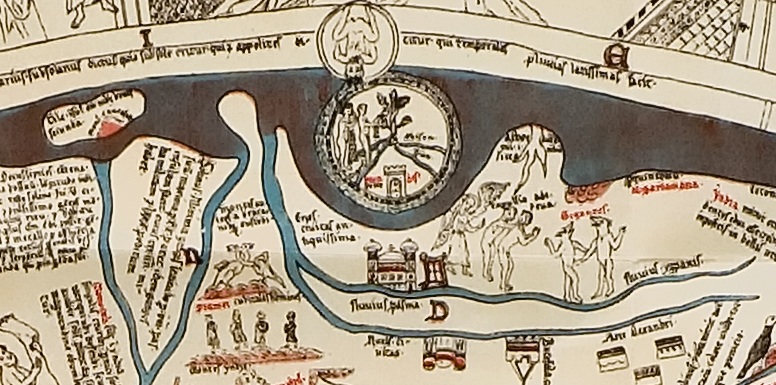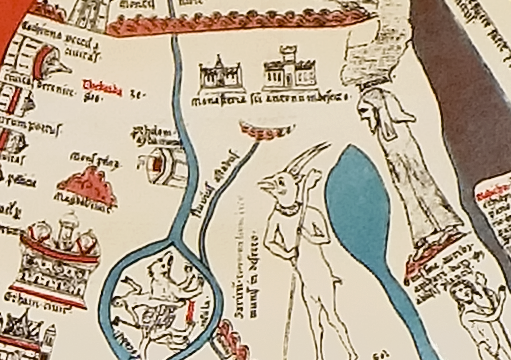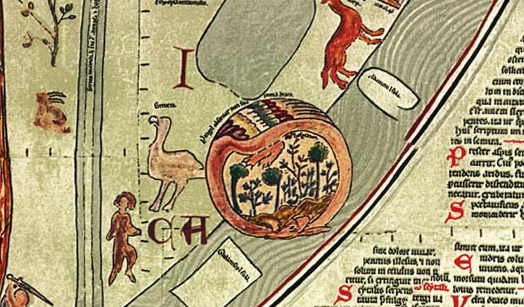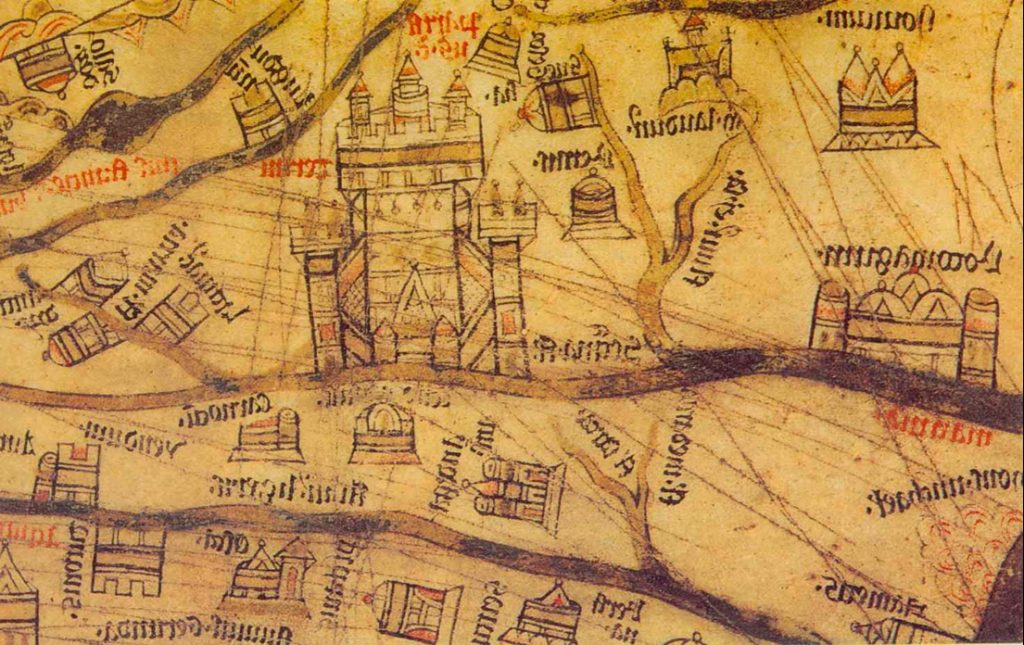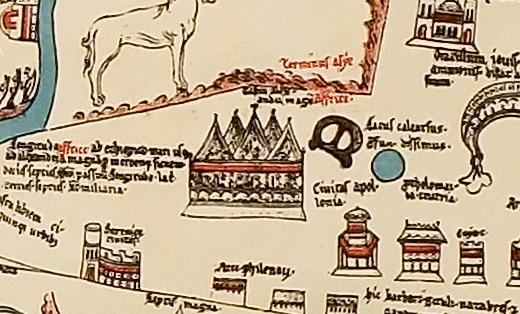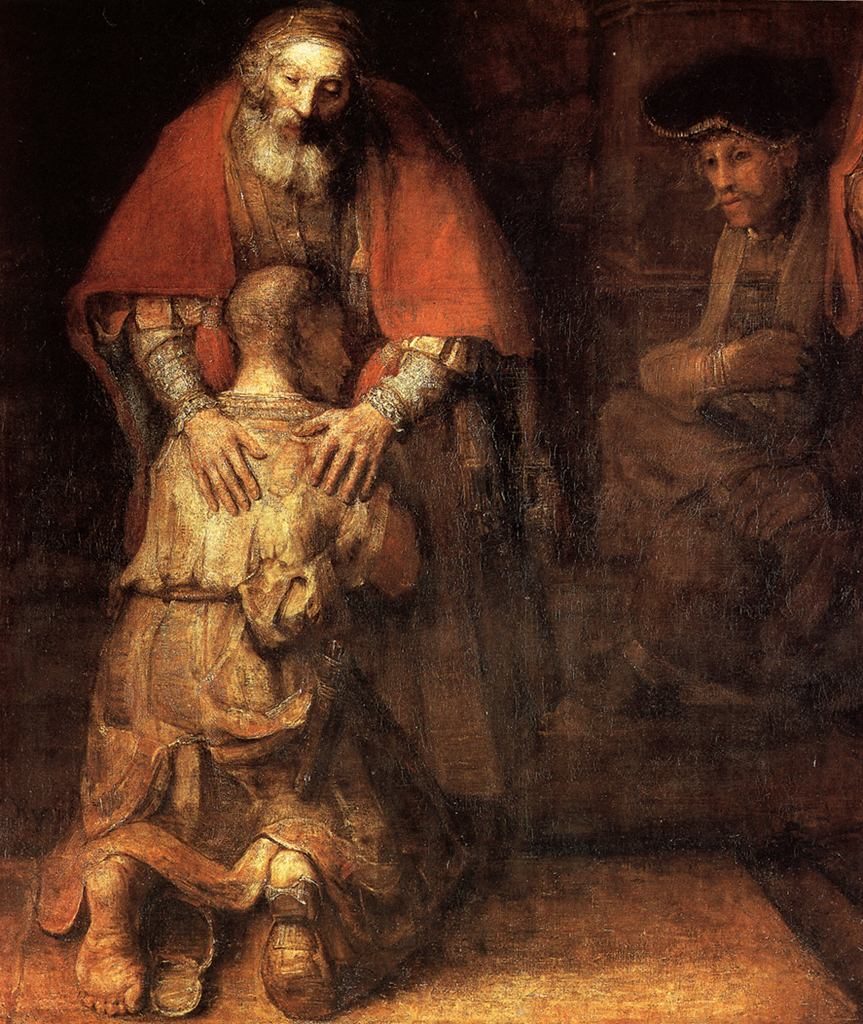I’m a sucker for spiritual journey stories. Earlier this spring, my Twitter friend Ellen Mandeville published a good one–it’s an article about a sailing trip that turned into a spiritual journey. Because of the incredibly beauty of some of islands she and her husband visited, she titled her article “Sailing to Paradise.” It’s a great read—you should check it out.
I confess that I liked Ellen’s article so much partly because it reminded me of the Middle Ages, when travelers tried to reach a literal paradise.
On the Hereford Map, a map of the world from ca. 1300, we see an island at the very top, in the far east. This is Eden, or Earthly Paradise as it was called in the Middle Ages. It appears as a circular, walled garden cut off from the “mainland” of the earth by a narrow strip of water.
Eden, of course, evokes the creation of the world. It’s part of cosmic history. In the medieval era, Eden was also believed to be an actual location on planet earth. I mean a location that you could visit. We have accounts of travelers trying to go there.
It wasn’t an easy journey. Many historians and theologians thought that Eden was hidden from view—on a mountain so high that no one could see it, separated from the mainland of earth by an impassable ocean, or even encircled by a ring of fire that reached to the heavens. You can see this ring of fire surrounding Eden on the Hereford Map.
Medievals loved telling stories about sailing to the Garden of Eden. In their thinking, even Alexander the Great is said to have made a go. In one medieval version of his story (Journey of Alexander the Great to Paradise, 12th c.), Alexander made it to the gates of Eden and from its keeper learned the folly of worldly ambition. In another version (the Alexandreis, 12th c.), Alexander died trying to storm the garden.
I don’t know that any medieval traveler claimed to have actually reached Eden. The travel writer John Mandeville said that many people perished trying to do so:
Many great lords have assayed with great will, many times, for to pass by those rivers towards Paradise, with full great companies. But they might not speed in their voyage. And many died for weariness of rowing against those strong waves. And many of them became blind, and many deaf, for the noise of the water. And some were perished and lost within the waves.
One Dutch cleric named Johannes de Hese said that he glimpsed Eden as he sailed through the Far East in the fourteenth century. He wrote:
And around the hour of vespers, when the sun goes down . . . the wall of Paradise can be seen in great clarity and beauty, like a star.
These stories are usually considered to be charming and a more than a bit naïve. Sailing to Eden? Really? But something struck me recently. These are, in a way, spiritual journeys. And they display an earnestness and a faith that we don’t often see in our world. In the Middle Ages, God’s cosmic story was so real that people believed, or wanted to believe, that they could sail right into it. Eden was part of the everyday world. It was a reality that people plotted on their maps. And a place they tried to reach in their ships.
Is God’s story as real to us today?
We study God and box him up and parcel him away. We experience him in church or in prayer or when we decide we want to. The medieval worldview—the one with Eden at the top of the map—reminds us that God’s presence fills the earth. His story is not just something to study. It’s a landscape in which to live. Take your ship and sail far enough, and you might sail into the origins of your faith.
So what do you think? Is it naïve that medieval Christians thought Eden was an actual location they could visit? Or is it amazing that God’s story was such a real part of their world?
